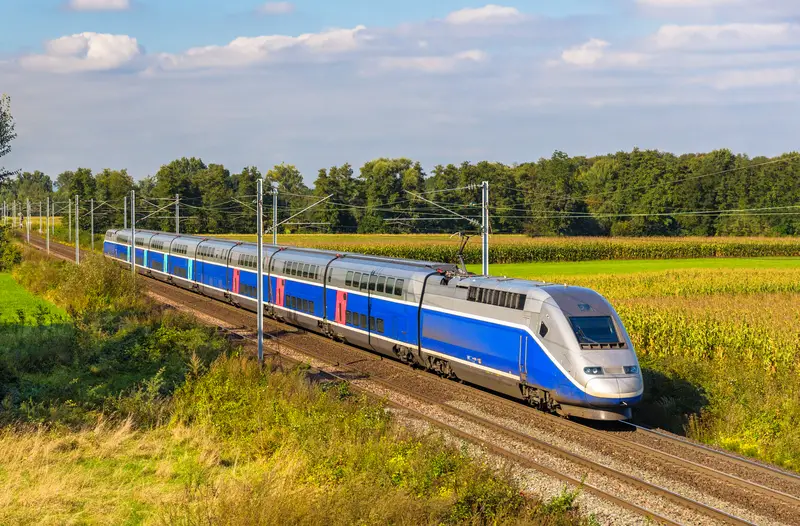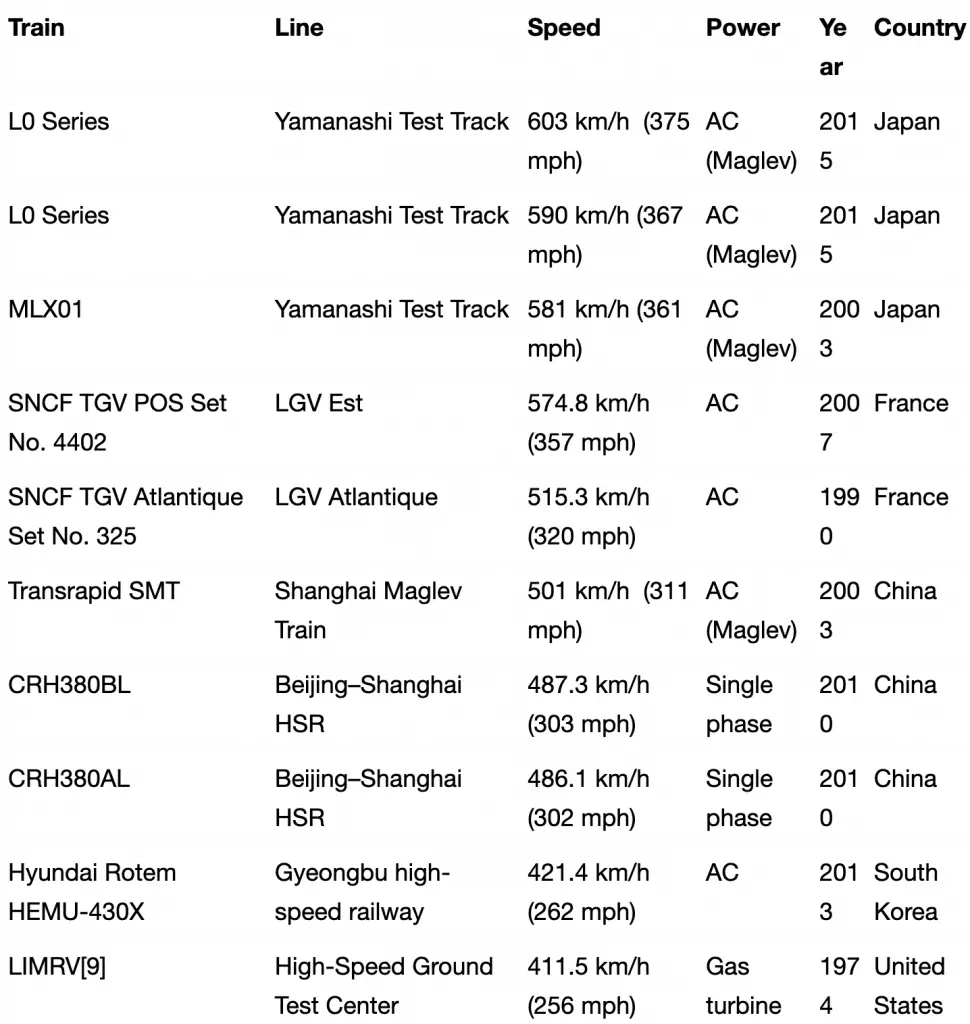
Trains have come a long way since the first steam locomotive was built. They have become longer, heavier, and more comfortable than ever before.
Technological advances have allowed the train to become one of the most efficient ways to travel, but how fast does a train go?
The fastest passenger train in the United States is the Acela Express which reaches speeds of 155mph. The European high-speed trains are limited to 200mph due to the terrain. Asia has the fastest High-speed trains that can travel at speeds exceeding 200mph.
Read on to discover how fast a train can go, what are the speed records and which continent has the fastest trains.
The Fastest Passenger Trains From Around The World
Trains have been transporting passengers and freight since the beginning of the 19th century. Trains play a major role in a country’s economic growth by offering a cheap and reliable way to move tradable goods.
But technology has no brakes, and the development into increasing these mammoth trains’ speed is ongoing!
Here is a list of the fastest commercial passenger trains from around the globe.
| Train | Maximum Speed | Country |
| Shanghai Maglev | 431 km/h (268 mph) | China |
| CR400AF /BF | 400 km/h (249 mph) | China |
| CRH 380A | 380 km/h (236 mph) | China |
| Shinkansen E5, H5 | 360 km/h (224 mph) | Japan |
| AGV Italo | 360 km/h (224 mph) | Italy |
| Talgo 350 | 350 km/h (218 mph) | Spain |
| Haramain Western Railway | 350 km/h (218 mph) | Saudi Arabia |
| Deutsche Bahn ICE | 330 km/h (205 mph) | Germany |
| Korail KTX | 330 km/h (205 mph) | South Korea |
| Eurostar e320 | 320 km/h (200 mph) | United Kingdom |
Train Speed Records From Around The World
When a train is prepped and ready to set a speed record, it has a minimal amount of passengers and ballast. These trains can then show their true speed potential on a closed track. The closed track allows the conditions to be optimized for a speed run.
Here is a list of the train speed records.

How Fast Are Trains In The United States?
The fastest passenger train in the United States is the Acela Express. In the early 1990s, Amtrak began prospecting for a new high-speed train for their Northeaster corridor.
They settled on a design from Bombardier and placed an order for twenty train sets. The rail infrastructure was upgraded to cope with high-speed rail trains.
The Acela train sets were rated to travel at 220mph, but the existing rail infrastructure reduced the speed to 125mph along the routes. The fastest section on the Northeastern corridor is the short 48-mile-long stint on the way to Rhode Island. On this short length of track, the Acela Express can stretch its legs to 155mph.
North America would not be what it is today if it was not for the freight trains. These trains transport and deliver almost anything to all four corners of the US. The Amtrak freight trains are long and extremely heavy but very efficient.
Freight trains have a top speed of 65 to 80mph, but this will depend on the type of freight, the weight, and the route the train will be traversing. But taking all variables into account, freight trains in the US have an average speed of 21.5mph.
How Fast Are Trains In Asia?
Asia has some of the quickest and most efficient passenger trains in the world, with China and Japan at the forefront.
China has well-designed high-speed rail lines that connect all its populace cities. All high-speed-rail trains that operate on the dedicated lines must not travel at a speed less than 155mph.
In Japan, fast rail transportation is taken very seriously. The Shinkansen train travels all around the island at a speed of 200mph and has an exceptional on-time performance record. The Shinkansen is known for its record-breaking speed when it reached a blistering 275mph on a test track.
Freight trains in Asia do not have a dedicated line like high-speed trains. These freight trains are either electric or diesel-electric and can travel at speeds up to 68mph. Freight trains that are transporting dangerous or hazardous cargo, the speed limit is set at 59mph.
How Fast Are Trains In Europe?
Europeans have had high-speed trains since the introduction of the German Intercity Express (ICE) in 1985.
The high-speed train network in Europe has advanced and connects to most of the EU countries. The speed for high-speed passenger trains is limited to 200mph in Europe due to the terrain. But there are routes where the trains can attempt high-speed records.
The French TGV travels at 200mph when passengers are aboard, but it set a high-speed record in 2007. The TGV, dubbed V150, was a slightly modified variant of the TGV passenger train and reached a speed of 357.2mph on the run from Paris to Strasbourg.
The European freight trains are all regulated by the countries they operate in. Freight trains in Germany may not exceed a speed of 99mph, and freight trains in the United Kingdom must stay under 74.5mph.
France had the record for the world’s fastest freight train. The TGV La Poste was an overnight mail train that traveled at 168mph in 1985. But due to logistical changes, the La Poste was taken out of service shortly afterward.
Conclusion
Trains have been transporting freight and passengers for over 150 years. These long and heavy machines can reach breakneck speed but are limited in their travel routes.
The fastest passengers train in the world is the Shinkansen which holds a high-speed record at 275mph.
If you’re wondering what type of fuel trains use to keep up these speeds, I listed the most common fuel types for trains in this post.
